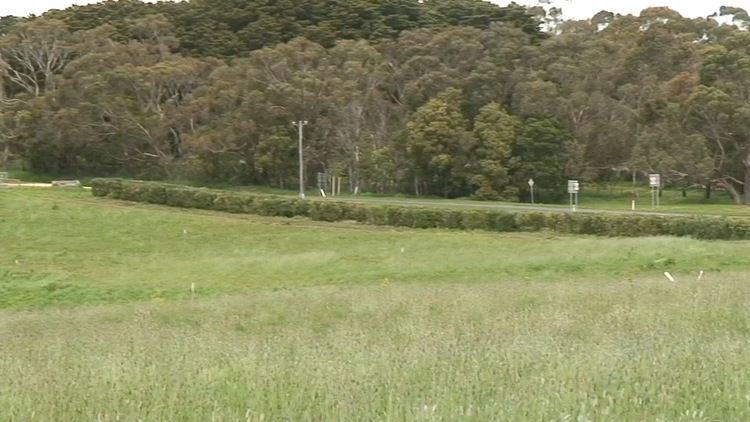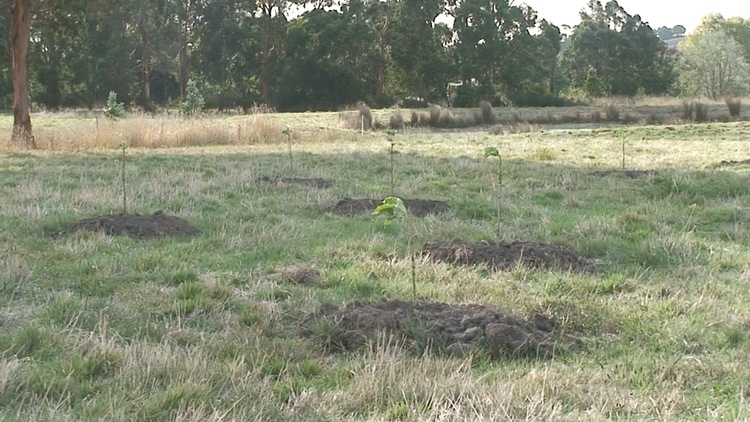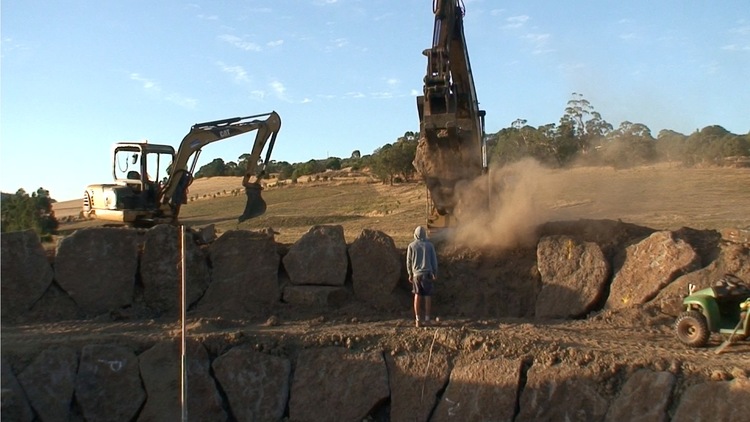2013
/SPRING 2013
This year we had an absolutely perfect Spring. One could almost imagine having enjoyed an English spring. The temperatures were mild, it was wet but not too wet and there were only a few windy days. As a result the trees have burst into vigorous leaf and have put on excellent growth. Also for some reason this Spring there was minimal damage from unfriendly pests like slugs and caterpillars and no bacterial or fungal damage either.
Importantly there were virtually no losses due to drowning unlike last year, despite winter being wet and Frogwood becoming marshy again for the second year in a row.
It appears that the "Islands" that the trees were planted into this year have made a huge difference to the survival rates while any trees that were likely to drown without the assistance of an Island unfortunately passed on last year.
So far the Islands have been a great success but the next test will come when summer arrives and many of the newly planted trees will have many of their roots "exposed" to extra heat and dryness by being located in the Island.
Spring in the land of the giants.
Winter 2013
It was another wet winter this year which will be always welcome after something like 12 straight years of drought. In fact while the rainfall may have been somewhat less than last year the ground seemed to be wetter and the standing water lasted for longer. I wonder if this is because last year a lot of the water was still going towards replenishing the water table. At least all the most recent tree plantings have their own little Island to keep them out of the water. It was odd, but also reassuring to see some of the trees looking like little palm trees on those cartoon deserted islands.
Another impact of the wet winter is that a small number of the rock panels that make up the Ancestor henges have fallen over as the earth in the enclosing wall compacted with the added moisture. This is not overly concerning as it was expected to happen and the project is scheduled to be finished next March when hopefully the earthen wall will be fully compacted and the structure will be finished.
AUTUMN 2013
Once again the majority of planting took place in Autumn, except the bare rooted trees which go in towards the end of Winter, as it almost certainly will each year from now on.
This years planting focused on planting out the Land of the giants. The Land of the giants is located on the far side, east, of the creek and makes up maybe one fifth of the Arboretum. The Land of the giants is called the land of the giants because this is where some of the largest tree species on the planet are being planted here. Tree species include (and I believe are); the worlds tallest hardwood species (also the tallest flowering species), Victoria's very own Eucalyptus regnans (mountain ash), the worlds tallest tree species Sequoia sempervirens (Californian redwood), the most massive tree species Sequoiadendron giganteum (the giant sequoia), the tallest conifer species Pinus ponderosa (the ponderosa pine) and the tallest deciduous species in the world Nothofagus alpina (Rouli).
Learning, hopefully, from the damage caused to the trees by a wet winter this year all the trees planted on the flats were planted into their own Islands of dirt. These Islands were created by tipping a gator load of dirt, put in the gator by an excavator. Fortunately I have quite large piles of top soil left over from various earth works that have been undertaken over the years. The aim of the Islands is to keep the trees clear of the water and also help avoid some of the bad cracking of the soil that happens in summer.
SUMMER 2013
The big works this year really were big by just about any measure. This summer should phase one of the construction of the Ancestor henge. For those of you who may not know, a henge is a large circular Neolithic structure constructed of earth and or rock where rituals and ceremonies were held. The henge that most people may be familiar with is Stone henge in Wiltshire England.
Apparently many of the ancient henges are believed to have been closely linked to ceremonies related to ancestor worship. As I have relatively recently lost one of my parents and I had long been looking for a feature to anchor one of the points on the Diamond lawn the idea for a Ancestor henge came into being
The big dry meant a LOT of watering.
The single biggest undertaking at the Arboretum was commenced this summer, the creation of the Ancestors Henge.
Hot and dusty! The first years work on the henge in progress.
















